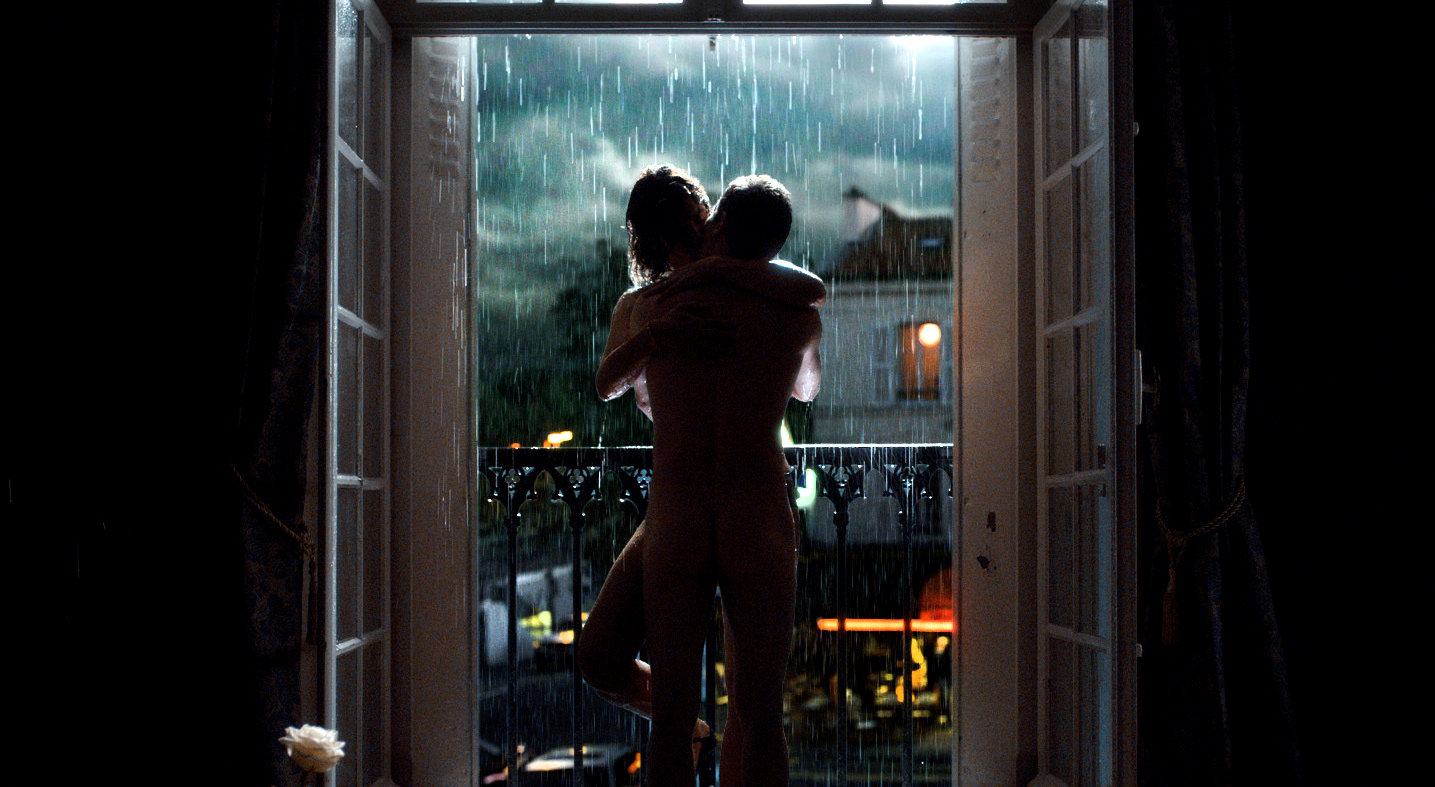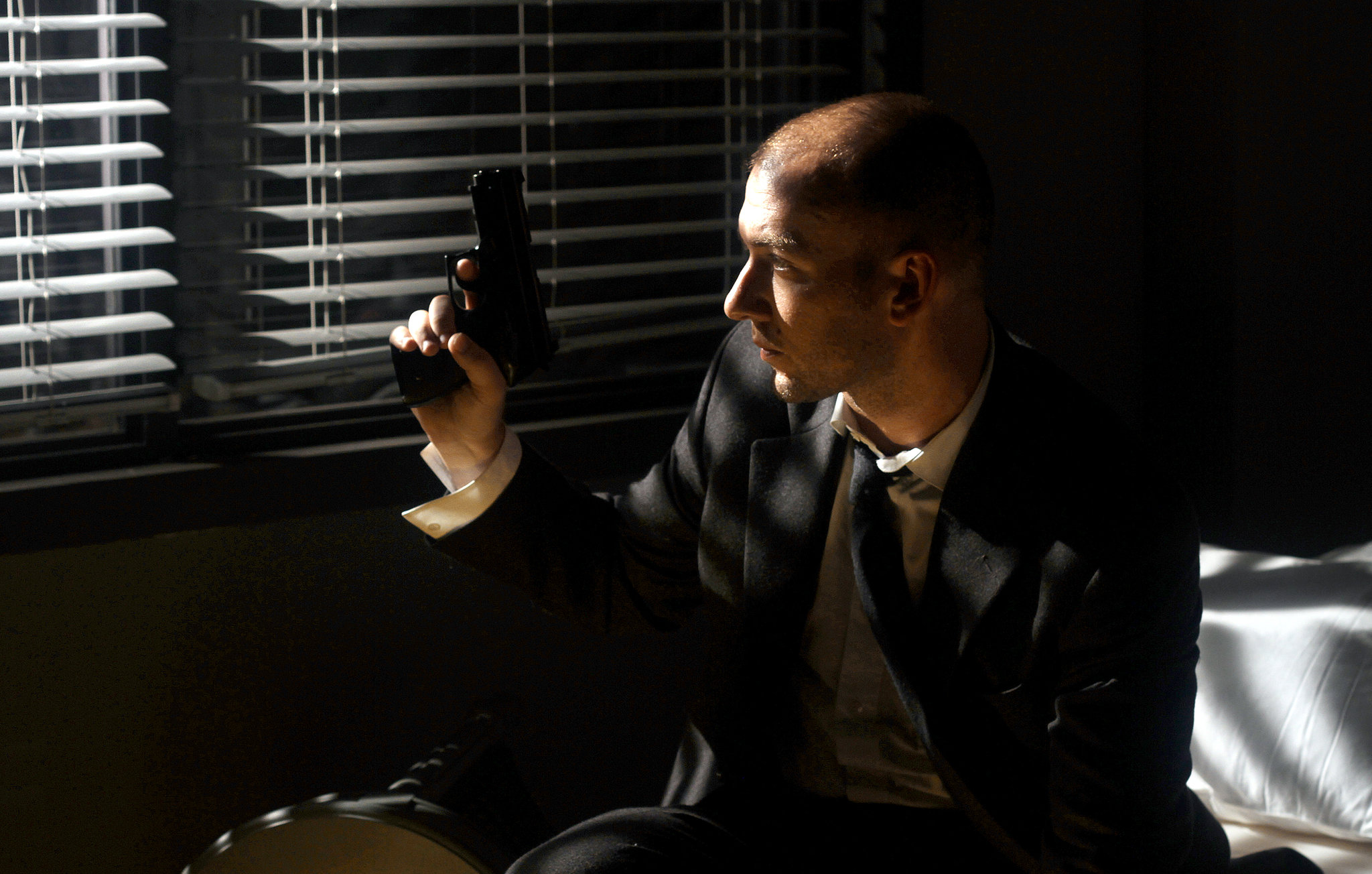Style is substance. In this case, style is defined as the confidence of an aesthetic: an ability to corral lighting, choreography, color, sound and performance together to create an atmosphere that suggests its own life, meaning and ecstasy of creation. Style as substance offers refuge from “filmed content,” to borrow from Alfred Hitchcock. Or, more specifically, from preoccupations with literal-minded plotting, characterization, and superficial socio-political “relevance” that collectively serve as a distraction from conventional or inept craftsmanship. The genre film, with its encoded symbolic shorthand, is ideal for formal experimentation, as Hitchcock obviously well knew.
Nightcrawler (dir: Dan Gilroy); Locke (dir: Steven Knight)
The scripts, both written by the films’ respective directors, are serviceable but schematic and obvious. But the movies, both comprised of imagery that finds their alienated heroes driving around their cities at night, memorably capture the literal and spiritually nocturnal alienation of the disenfranchised. Nightcrawler, with its seductively sad L.A. iconography, bathed in surreal and painterly neon, suggests Edward Hopper rendering the ultimate noir. Locke pins a powerfully masculine actor down to one setting and turns his squirming into a thing of stifled physical poetry.

The Empty Hours (dir: Aarón Fernández); The Blue Room (dir: Mathieu Amalric)
Genre entries stripped of much of the meat of genre obligation. The Empty Hours slows its May-December story down to a crawl, allowing us to savor the Veracruz setting in a series of graceful long and medium shots that offer it up as a quiet metaphor for indecision as well as financial and personal insecurity. The Blue Room treats its traditional noir plot as an abstraction; emphasizing ripe, hallucinatory colors that establish the hero to be so enthralled with purplish fiction and sentimentality as to miss a blossoming tragedy.
Jersey Boys (dir: Clint Eastwood)
With Jersey Boys, one of his best films in years, Eastwood quietly revitalizes the musical by fetishizing process. The script is a work of de-emphasis, many familiar beats of the music bio are skimmed over or omitted entirely, and this gives Eastwood the room to craft elegant long takes that manage to capture a quiet symphony of communication, collaboration, and bracingly tactile mechanical fiddling.

24 Exposures (dir: Joe Swanberg)
This film is actively at war with its dumb cops-and-killer plot, which is so flimsy and unconvincingly rendered as to suggestively contrast against the startlingly beautiful recreations of 1950s pin-up photography that gradually come to dominate the narrative, which are done up to suggest gory female violation that speaks to the fantasies of subjugation that govern pop culture at large. Swanberg boldly destroys his framing story, allowing it to collapse in on itself, as the violent art rises to the forefront, trumping the lives that exist to serve it.
John Wick (dir: Chad Stahelski, David Leitch)
Stahelski and Leitch, in a remarkable debut, display a talent for physical palpability: not just the crunch of killers’ bones, but the actual weight of their bodies. The cinematography is a light symphony of noir daydreams, suggestive of a netherworld that exists all around, above, and beyond the ultimately poignant exertions of the good and bad guys alike.

The Guest (dir: Adam Wingard); Cheap Thrills (dir: E.L. Katz)
The Guest is an uncertainly satirical American thriller with pointed Stepfather overtones that’s elevated by Wingard’s playful sense of color coordination, particularly in a crackerjack Halloween-themed climax. Cheap Thrills is the harder, greater horror movie: the satire is fuller, and the violence is pointedly less poetic, profoundly blunt.
Inherent Vice (dir: Paul Thomas Anderson)
This film, the trickiest and most ambitious American noir since Chinatown, epitomizes the use of genre framework as a springboard for personal and political inquiry. The Thomas Pynchon book smothers you with ostentatiously fancy names and references and plot points, but Paul Thomas Anderson’s deliberate, austere melancholia, reminiscent of There Will Be Blood, and, particularly, of The Master, gives the humor something to bounce off of, imbuing the story’s vision of an American countercultural mirage with newfound gravity. There’s also a feeling of circular meta sadness. The 1970s drug-and-party milieu suggests a reprise of Anderson’s Boogie Nights, only without that youthful sense of wunderkind invention, though a wonderful final high note suggests that one dream dashed is another dream restored.



